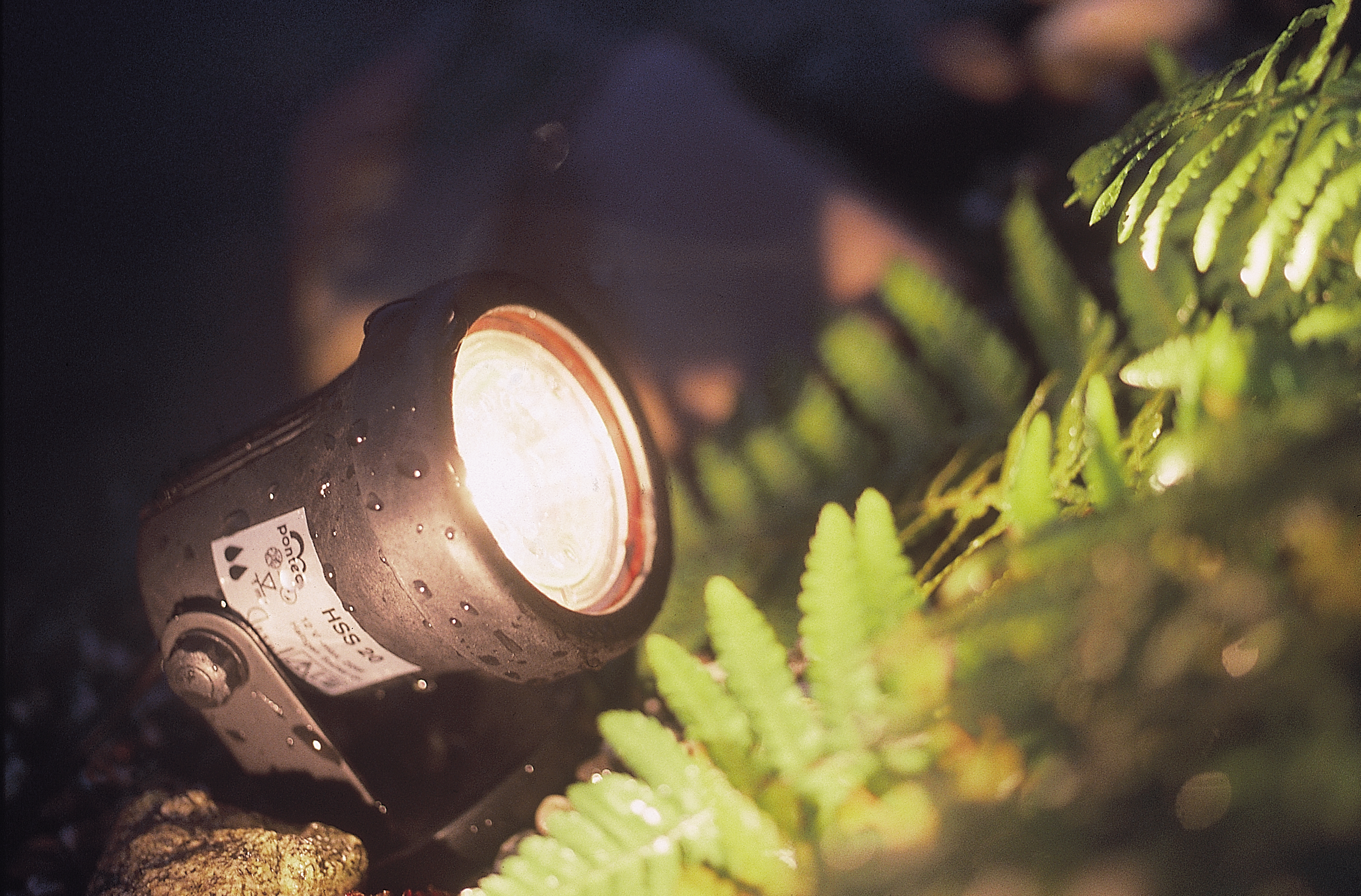Pond Lighting 101
Outdoor and underwater lighting can impart a magical ambience to your pond once the sun has set. Through the use of different types of illumination, both above and below the water, the pond can take on a whole new aspect at night, with the water reflecting the lights and the pond plants casting unusual shadows. At the same time, lighting will also serve as a safety feature when moving around the pond area during the evening. A focal point such as this can be enjoyed pondside, from the patio, and even from inside the house.
There are three types of pond lighting: underwater lighting, floating lighting, and non-submersible lighting that surrounds the exterior of the pond. A cleverly placed mixture of these will have the most visual impact.

With water and electricity being a hazardous mix, it is extremely important to purchase only from a reputable dealer and check that any submersible lighting carries the IP67 or IP68 rating. IP stands for Ingress Protection and the numbers that follow denote how well protected the fittings are against solid particles and liquids. IP67 means that the fittings are safe to submerge in water up to 1m in-depth, and IP68 is safe beyond 1m (usually up to 3m, but do check with the manufacturer). Fittings for external use around the pond will carry a lesser rating for spray/splash resistance. All will operate off a low voltage cable with a transformer.
Solar-powered lighting is also available, but unfortunately, with our somewhat unreliable weather in the UK, strong or lengthy night-time output cannot always be guaranteed, especially following dull, overcast days. Nonetheless, it can create a rather enchanting, subtle effect on occasional evenings, particularly the floating water-lily shaped type.
Ideally, lighting should be considered during the planning stage of the pond to make installation as easy as possible, but even with established ponds, it is still fairly straightforward to install various lighting types. Remember that the deeper the pond, the stronger the light output will need to be so that it can be seen through the water effectively, and LEDs are likely to last longer than conventional halogen bulbs.
Submersible lighting can be used to great effect to up-light water features such as waterfalls, fountains, streams, and sculptures. It is, however, best to use underwater lighting in moderation, adding illumination here and there to draw attention to certain features, leaving an abundance of darker areas for the pond's inhabitants to explore and feel secure amongst. With underwater illumination, the lighting effect will only be as good as the clarity of the water itself: murky water results in a dim glow. So be sure to keep on top of water clarity and maintain your features well.
Exterior lights placed near the margins of the pond can light the surrounding foliage beautifully, particularly tall, willowy vegetation and bold architectural plants. Such lighting would also have the added benefit of revealing a safe path around the pond. External lighting may be installed into the ground via simple spikes, or secured into a solid substrate adjacent to the pond via mounting brackets. Other types of external lighting include those cleverly concealed as rocks, which can be hidden amongst the surrounding decor very easily. Whilst white pond lighting tends to look the most natural, many lights do come with coloured filters, should you wish to emphasise certain features with a different hue.
We hope this article has provided some useful ideas for making a night time feature of your pond. A small selection of our pond lighting products may be found here, with more available in-store. If you have any questions about lighting for your pond, please do not hesitate to ask a friendly member of staff.



